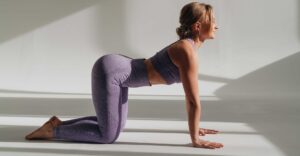Whether it’s your first or 50th massage, you might not know about the many types of massages that exist. There’s a variety of massage therapy types that have incredible mental and physical health benefits (commonly under the heading of therapeutic massage), while serving different functions. Today, we’ll explore seven of the most common kinds of massage and the differences between them. After reading, you’ll not only be more informed on the benefits of massage and choosing the best massage for you, but you’ll be one step closer to relaxation.
Before booking your next massage session, it’s important to first determine the purpose for your massage. Are you seeking pain relief, stress relief, or just experience the relaxation process? Perhaps, you are seeking a massage session to complement your physical therapy efforts? It’s important to communicate this with your massage therapist so they can tailor their service to fit your needs.
1. Swedish Massage
Swedish massage is the most common type of massage. Known for its soft, long, kneading strokes combined with shorter, rhythmic tapping strokes, this kind of massage uses light to moderate pressure to accommodate for your comfort level. Swedish massage therapy includes five different kinds of strokes.
• Effleurage: a smooth, long stroke used to relax soft tissue
• Petrissage: kneading, rolling, and lifting movements
• Friction: deep, circular movements or wringing meant to increase blood flow
• Tapotement: percussive, alternating taps done with cupped hands, fingers, or edge of the hand
• Vibration: rocking and shaking movements Swedish massage relieves muscle tension and provides full-body muscle relaxation. It can be helpful in recovering from an injury.
2. Deep Tissue Massage
Deep tissue massage gives attention to painful trouble spots on the body. It targets muscle knots (areas of tension within the muscle fiber) and problem areas in deeper muscle layers and connective tissue.
Massage therapists will use slow, firm, more intense strokes or friction to help relieve pain from repetitive strain, postural problems, injuries, and tight or painful muscles.  Deep tissue massage should never hurt, even if the strokes are more intense.
Deep tissue massage should never hurt, even if the strokes are more intense.
This type of massage can be helpful in treating repetitive stress injuries, chronic pain conditions and injuries that cause limited mobility.
3. Hot Stone Massage
Hot stone massages involve hot stones (usually a volcanic rock called basalt that retains heat) placed on different parts of the body. The stones may be left in place or used as massage tools by a massage therapist. This heat on the body’s muscles has a relaxing, healing effect and increases blood flow to the area, as well as loosens muscles.
Hot stone massage can be used to treat muscle injuries by reducing stiffness and discomfort.
4. Sports Massage
Sports massages manipulate the body’s soft tissues and focus on certain muscle groups dependent on the athlete’s sport. Usually used for people who play sports or exercise regularly, sports massage helps prevent and treat injuries, reduce muscle pain, correct muscle imbalances, improve flexibility, and enhance athletic performance.
Sports massage involves faster strokes than Swedish massage and may include other massage techniques like compression, pressure point therapy, friction, and joint mobilization.
5. Reflexology
Reflexology is based on the concept of ‘reflex areas’ on the hands and feet, whose energy is believed to be connected to other parts of the body. In a reflexology session, a massage therapist will use hand, thumb, and finger techniques like kneading and rubbing on certain areas of the feet.
These techniques promote relaxation , healing, health and wellbeing. By applying pressure to reflex points, reflexologists attempt to balance your nervous system and stimulate endorphins to relieve discomfort.
6. Shiatsu Massage
Shiatsu massage has history in traditional Chinese medicine, but is a form of Japanese bodywork. Shiatsu means ‘finger pressure’ in Japanese. It involves a massage therapist using rhythmic, localized pressure with their fingers, hands or elbows on certain acupressure points on the body. These points are are believed to improve the body’s energy flow and regain balance.
Shiatsu massage can be helpful in increasing energy, recovering from an injury, and stimulating the digestive system. Commonly used to reduce stress and stress-related health issues, Shiatsu massage can be effective for conditions like arthritis, insomnia, and sinus problems.
7. Thai Massage
Thai massage is a more energizing form of massage, incorporating assisted yoga, passive stretching, and pressing massage movements. Thai massage attempts to align the body’s energies and during a session, the massage therapist will move and stretch you in different postures.
Thai massage uses rhythmic compression of muscles, mobilization of the joints, and acupressure to reduce stress and improve flexibility. It can help treat back pain, balance problems, and even symptoms of migraines.
So whether you have neck pain or sports injuries or just need some pampering, a massage therapy program with a qualified massage therapy service provider may be the right next step for you. Make sure you review your medical history, level of pain, and level of comfort with your massage therapist before diving in.
Feel informed enough to book your next massage therapy session? Relaxation is at your fingertips. Find a professional massage therapist near me.








